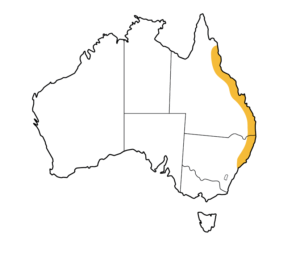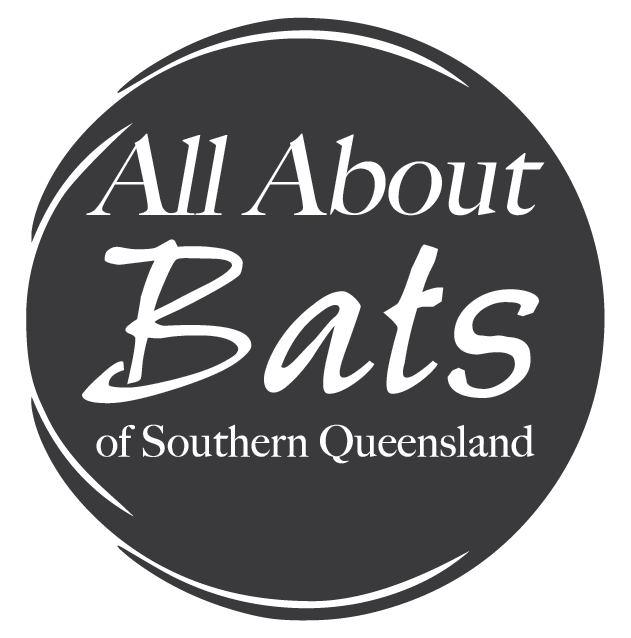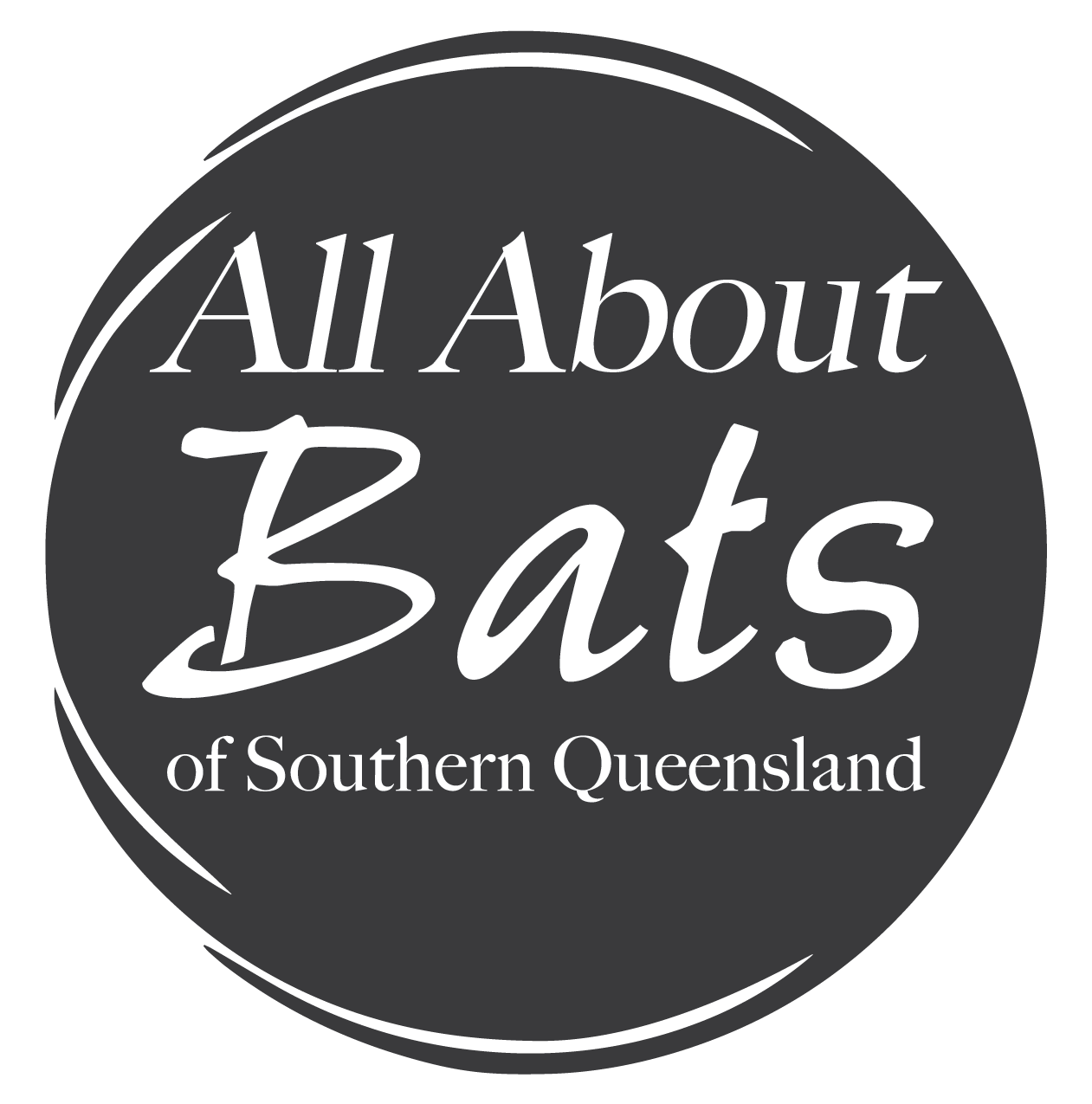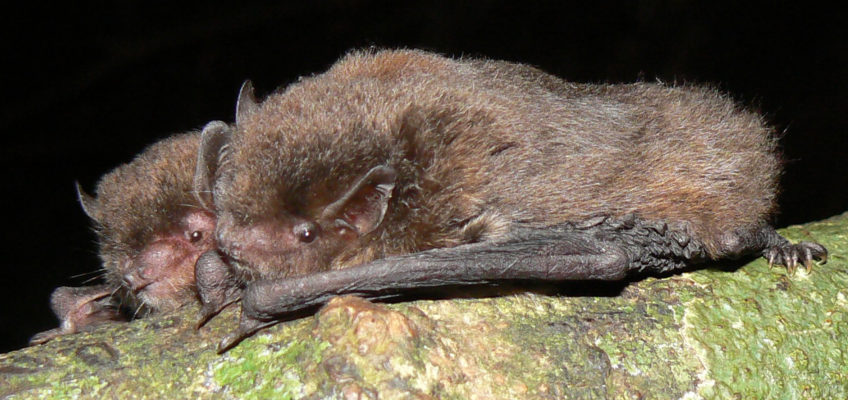Vespadelus pumilus
The eastern forest bat has dark chocolate brown that is almost black at the base of the hairs. Its belly fur is longer and lighter in colour. They feed between the canopy and the understorey and their diet consists of moths, beetles, flies, ants/wasps and bugs. Short periods of torpor in the early morning and late afternoon allow it to conserve energy, even in summer.
 Habitat
Habitat
Preferring to roost in mature trees, this species can be found in rainforest and wet sclerophyll forests where the gullies contain rainforest vegetation. They roost in mature trees with small to large hollows. Maternity roost hollows have recorded up to 54 females; males are usually solitary.
Breeding
Little is known about their reproductive cycle, but it is known that they give birth to twin young (usually) in October to November.
Predators and Threats
Owls, hawks and goannas. Los of tree hollow, land clearing and wildfire.
Photo: Les Hall
Sources:
Churchill, S. (2008) Australian Bats (2nd Edition). Allen and Unwin, Sydney.
Hall, L. (2009) Bats, A Wild Australia Guide. Steve Parish Publishing, Queensland.
Atlas of Living Australia


